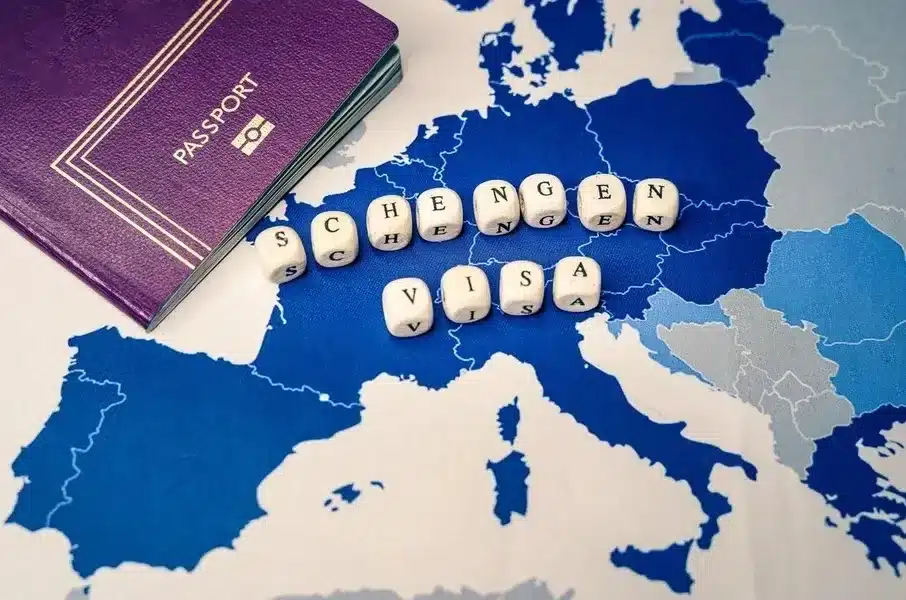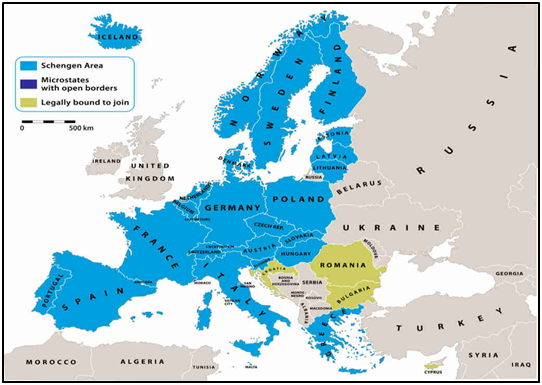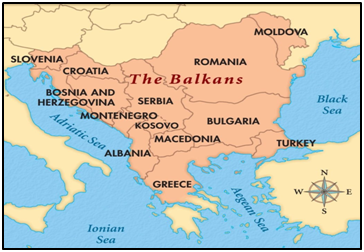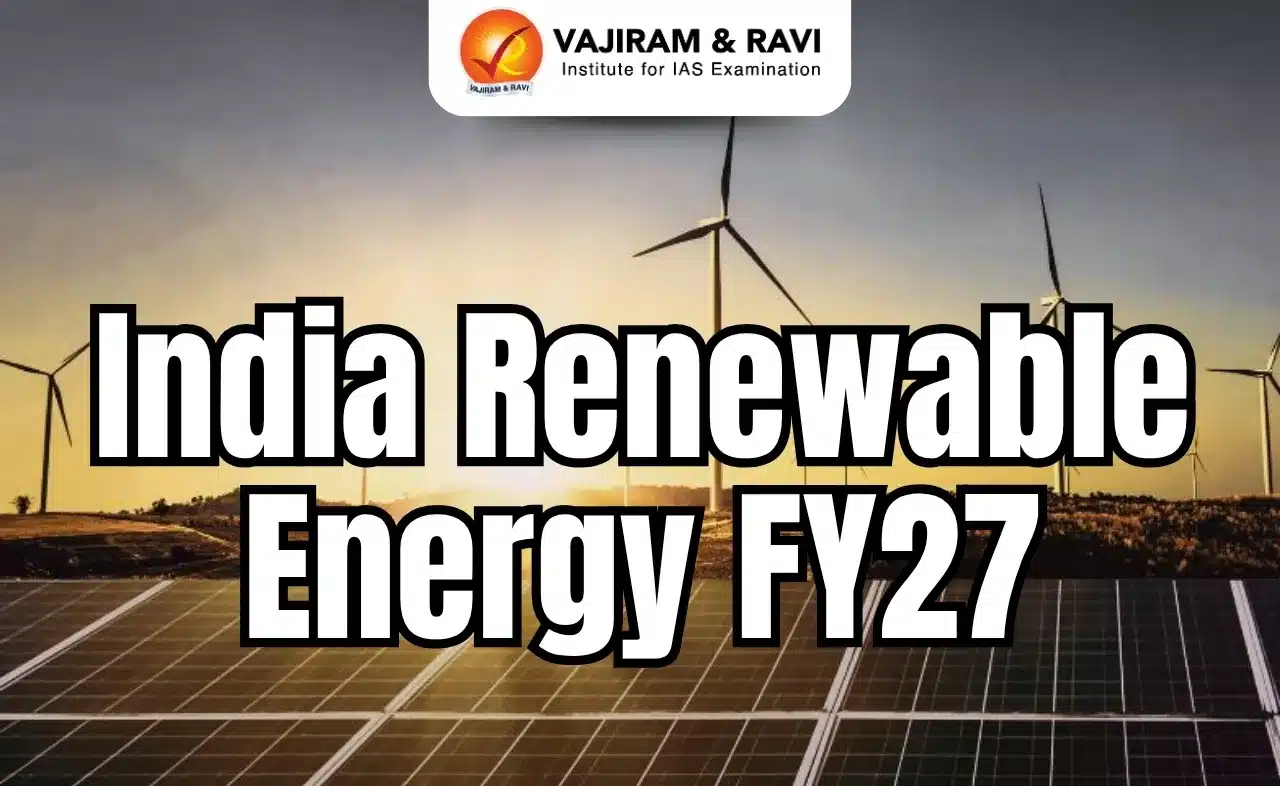What’s in Today’s Article?
- Why in News?
- About the Schengen Area
- What are the Advantages of the EU’s Border-Free Policy?
- Is Admission to Schengen Mandatory for EU members?
- Challenges Faced by the Schengen Region
- Why was Kosovo’s Application Kept Pending for Years?
Why in News?
- Kosovo recently secured visa-free access to the Schengen zone in Europe, world’s largest zone of free movement, becoming the last western Balkan non-European Union (EU) nation to waive visa requirements.
- Citizens of Kosovo can now enter the Schengen as tourists for 90 days within 180 days.
About the Schengen Area
- The zone is known after Schengen, the tiny Luxembourg village bordering France and Germany, where the agreement was signed in 1985 among five of the six EU founding members except Italy.
- Currently, it is an area encompassing 27 European countries that have officially abolished border controls at their mutual borders.
- It mostly functions as a single jurisdiction under a common visa policy for international travel purposes.
- Croatia, a EU member since 2013, joined Schengen in 2023, while Romania and Bulgaria, EU members since 2007, will gain partial Schengen entry from 31 March 2024.
What are the Advantages of the EU’s Border-Free Policy?
- For nationals of any country, the benefit is the freedom to travel with a single Schengen visa to other European nations within the borderless area.
- For EU states, the Visa-free borderless travel, alongside the single currency adopted by 20 EU countries, is the most visible symbol of European integration.
- The integrity of Schengen was critical for the success of the post-war European project.
Is Admission to Schengen Mandatory for EU members?
- When the Schengen agreement took effect in 1995, only 7 of the entire 15-member union at the time joined the passport-free area.
- Today, 23 of the 27 EU states are part of the passport-free zone, excluding Cyprus, Romania, Bulgaria and Ireland.
- Additionally, the Schengen area comprises 27 countries, including four non-EU members: Iceland, Liechtenstein, Switzerland and Norway.
- It is important not to confuse the status of the four countries with the recent entry of Kosovo and the other five western Balkan entrants which are not counted among the Schengen 27 members.
Challenges Faced by the Schengen Region
- Schengen had come under enormous strain following the Eurozone sovereign debt crisis during the last decade.
- The arrival of thousands of migrants from conflict zones in Africa and West Asia and the anti-immigrant-politics stoked by the continent’s far-right populist parties also strained the region.
- The EU had even considered removal from Schengen, countries located on the bloc’s Mediterranean border, as individual states contemplated unilateral reinstatement of borders.
Why was Kosovo’s Application Kept Pending for Years?
- The case of Kosovo is appalling given that the European Commission had in 2018 cleared Pristina’s (capital) preparedness to tackle illegal migration and corruption, preconditions for the entry.
- The single biggest obstacle to the country’s Schengen visa waiver was strong opposition from several EU members, which do not recognise the 2008 unilateral declaration of independence by the breakaway state from Serbia.
- Kosovo has not been accorded legal statehood by the UN and denied recognition by Russia and China.
Q1) What is the European Union (EU)?
The EU is a supranational political and economic union of 27 member states that are located primarily in Europe. It was established by the Maastricht Treaty (1993), and was incorporated as an international legal juridical person by the Treaty of Lisbon (2009).
Q2) What was the Eurozone crisis?
The European debt crisis, often also referred to as the eurozone crisis or the European sovereign debt crisis, was a multi-year debt crisis that took place in the EU from 2009 until the mid to late 2010s.
Source: Why did Kosovo face delays in Schengen approval? | EXPLAINED | EUROPA
Last updated on June, 2025
→ UPSC Notification 2025 was released on 22nd January 2025.
→ UPSC Prelims Result 2025 will be out soon for the CSE held on 25 May 2025.
→ UPSC Prelims Question Paper 2025 and Unofficial Prelims Answer Key 2025 are available now.
→ UPSC Calendar 2026 is released on 15th May, 2025.
→ The UPSC Vacancy 2025 were released 1129, out of which 979 were for UPSC CSE and remaining 150 are for UPSC IFoS.
→ UPSC Mains 2025 will be conducted on 22nd August 2025.
→ UPSC Prelims 2026 will be conducted on 24th May, 2026 & UPSC Mains 2026 will be conducted on 21st August 2026.
→ The UPSC Selection Process is of 3 stages-Prelims, Mains and Interview.
→ UPSC Result 2024 is released with latest UPSC Marksheet 2024. Check Now!
→ UPSC Toppers List 2024 is released now. Shakti Dubey is UPSC AIR 1 2024 Topper.
→ Also check Best IAS Coaching in Delhi
























